As industry experts, Evans Graphics are constantly browsing print media to uncover latest trends and technological advancements.
Digital printing has come a long way since the 1900s and one team of researchers from the Karlsruhe Institute of Technology (KIT) may have brought about its newest incarnation.
That’s because the KIT group have become the first people to print high quality Bragg mirrors using inkjet printers, a far cry from the complex vacuum devices previously deployed.
How Does Bragg Mirror Printing Work?
A dielectric mirror, more commonly known as a Bragg mirror, is composed of thin layers of dielectric material set onto an optical material, typically glass.
Bragg mirrors are made to very precise specifications to reflect different wavelengths and spectrums of light, making them highly suitable for microscopy and medical technologies.
Those strict specifications mean that not just any ink and material can be used to manufacture said mirrors. Instead the elements of the ink need to be soluble and have suitable optical properties for the mirror to reflect light correctly.
With this in mind, the KIT research team used a combination of titanium oxide and polymethyl methacrylate as optical components of the inks. The allowed for the exact optical properties and thicknesses of the layers.
Their use of inkjet printing allows them to produce Bragg mirrors on various substrates such as glass and foils, in different sizes and variable lateral patterns.
The resulting printed Bragg mirrors are then able to exhibit high reflection at the desired wavelengths, as well as show an outstanding consistency in colour.
Is Inkjet the Future of Printing?
The method developed to use inkjet printing for such precise work marks a turning point for the industry.
With the research from KIT proving that inkjet printing can replace the existing intricate processes used to manufacture Bragg mirrors, all while maintaining the detailed quality necessary for the product. Moreover the method can be further applied across an array of goods.
Building on the researchers existing work, inkjet printing could soon be used to produce digitally manufactured customised mirrors, as well as small and intricate parts such as optical components for microsystems technologies or camera systems.
The inkjet method could even be applied to bigger and more elaborate wares like solar modules, facade elements, and advertising displays.
Don’t expect Evans Graphics to adopt the technology anytime soon but do expect us, and our peers, to keep a close eye on it.
For further insight into current industry practices and innovations, view our other printing processes blogs here.


